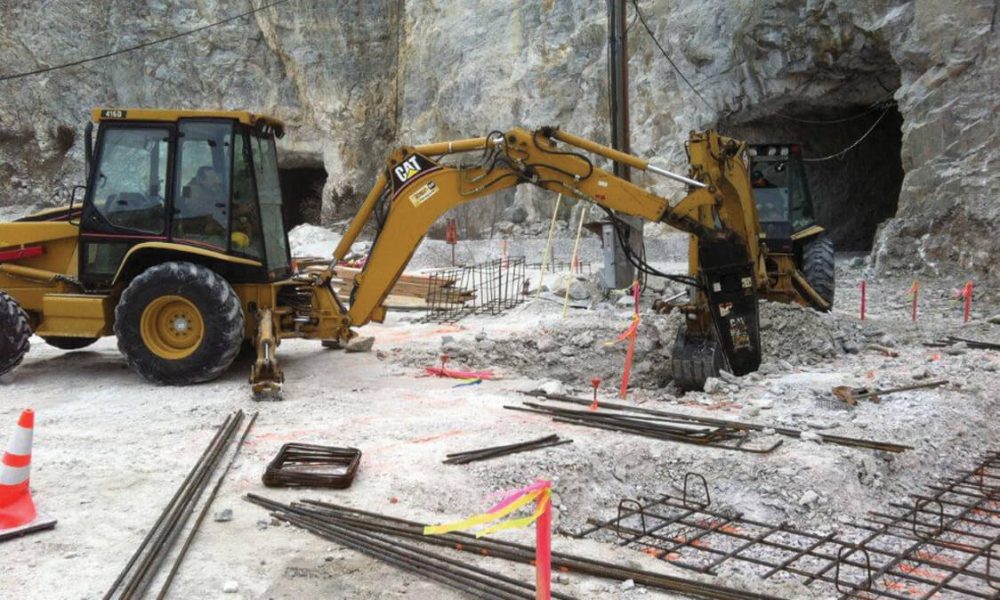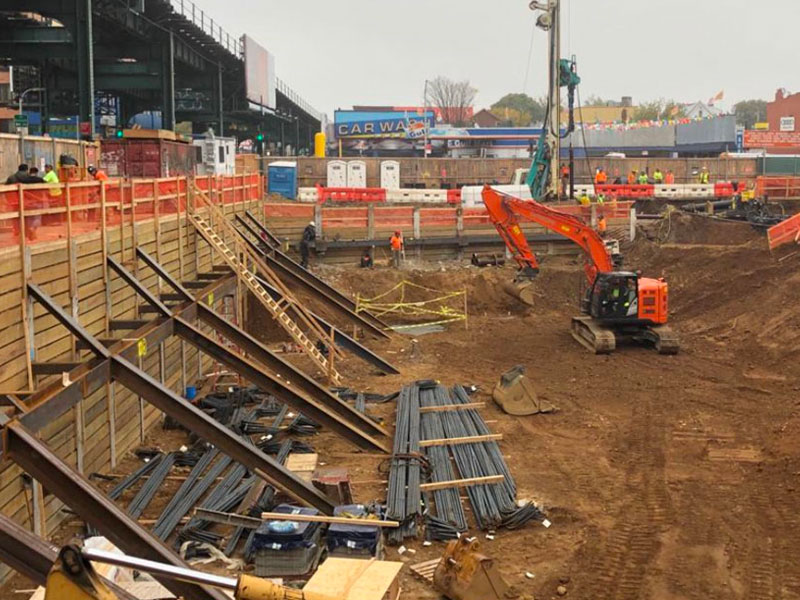Lancaster Trenching - Professional Trenching Solutions in Lancaster, Ohio
Lancaster Trenching - Professional Trenching Solutions in Lancaster, Ohio
Blog Article
Introducing the Art of Excavation: Pro Tips for Safe and Efficient Excavating
As soil is turned and earth is relocated, the complexities of excavation disclose themselves, requiring an eager understanding of devices, dirt structure, safety protocols, and environmental considerations. The experience required to navigate these aspects effectively can indicate the distinction between an effective excavation project and a prospective catastrophe.
Relevance of Appropriate Tools
To ensure the security and performance of any excavation job, making use of the suitable tools is paramount. The right tools not just enhance efficiency yet also alleviate risks connected with digging. Excavation projects differ in scope and intricacy, ranging from tiny property landscape design tasks to massive building endeavors. No matter of the project size, having the right tools can make a significant difference in the result.
Excavators are basic pieces of equipment in any type of digging operation. These flexible makers can be found in numerous sizes to suit various task needs. Miniature excavators are ideal for smaller sized jobs, while bigger excavators deal with much more substantial jobs efficiently. Backhoes are another important equipment kind, incorporating the features of a loader and an excavator in one maker. They are useful for tasks needing flexibility and maneuverability.
Apart from excavators, various other vital equipment consists of dump trucks, excavators, and trenchers. Discard trucks are important for eliminating and carrying excavated materials, while plates are utilized for digging slim and deep trenches. Excavators stand out in tasks that require pushing large amounts of dirt or debris. By buying the appropriate devices, excavation projects can be completed securely, on time, and with accuracy.
Understanding Soil Make-up
A comprehensive grasp of soil structure is basic for executing excavation projects with precision and security. Recognizing the various kinds of dirt is essential as it directly affects excavation techniques, devices choice, and general job effectiveness.
Sand bits are the largest and offer great drain however provide little cohesion. Silt particles are smaller than sand yet bigger than clay, supplying modest drain and cohesion. Clay particles are the smallest and provide high communication yet inadequate water drainage. Organic matter, such as decaying plant material, impacts soil fertility and stability.
Before beginning excavation, conducting soil examinations to identify its composition and characteristics is important. This information aids in selecting the suitable tools, carrying out security measures, and creating excavation strategies tailored to the details soil problems - lancaster trenching. By understanding dirt composition, excavation specialists can enhance task outcomes while making certain security and adherence to ideal methods
Safety And Security Procedures and Protocols
Recognizing soil make-up is the cornerstone whereupon precaution and protocols for excavation tasks are built, making sure the well-being of workers and the success of the undertaking. When it concerns safety and security during excavation, there are a number of vital measures that need to be implemented to reduce threats and protect against crashes.
Firstly, prior to any digging begins, an extensive examination of the site ought to be carried out to recognize any kind of potential risks such as below ground energies, unstable soil conditions, or neighboring structures that might present a threat. It is essential to have a visit the site qualified individual look after the excavation process to guarantee that all safety and security procedures are complied with purely.
Additionally, all workers involved in the excavation must be correctly trained in safe digging practices and the proper procedure of tools. By sticking to these security procedures and protocols, excavation jobs can be completed efficiently and without incident.
Effective Excavation Preparation
When getting started on an excavation job, meticulous preparation is necessary to make sure performance, safety, and effective results. Reliable excavation preparation includes a number of essential steps that are critical for the smooth execution of the task.
When the site assessment is complete, the following action is to create a clear timeline and routine for the excavation tasks. This includes establishing the sequence of tasks, tools requirements, and manpower appropriation. Proper scheduling aids avoid delays and makes certain that the task stays on track.

In addition, communication among all group participants is extremely important throughout the preparation stage. Clear directives, regular updates, and reliable control are important for a successful excavation project. By investing effort and time in precise planning, excavation teams can considerably improve efficiency, lessen dangers, and accomplish successful results.

Handling Environmental Considerations
With increasing focus on ecological sustainability in building methods, handling environmental considerations has ended up being a vital facet of excavation jobs. Excavation activities have the possible to affect the surrounding atmosphere through soil disintegration, sediment drainage, habitat disruption, and contamination of water resources. To reduce these risks, it is essential to apply finest techniques that focus on environmental management.

Additionally, correct waste monitoring is critical to avoid dirt and water contamination. Executing treatments for the disposal of harmful materials, look at this website recycling of waste materials, and decreasing making use of dangerous chemicals can considerably minimize the ecological impact of excavation tasks. By incorporating these practices into excavation preparation and implementation, building business can make sure that their tasks are not only safe and productive however additionally environmentally responsible.
Final Thought
In verdict, understanding the art of excavation calls for a comprehensive understanding of proper equipment, soil composition, safety steps, and efficient planning. By complying with these standards and taking into consideration ecological variables, excavations can be conducted safely and effectively. It is crucial to prioritize safety and productivity in every digging project to guarantee successful results.
As soil is transformed and earth is moved, the complexities of excavation reveal themselves, requiring a keen understanding of devices, soil make-up, security protocols, and ecological considerations.To ensure the security and efficiency of any excavation job, utilizing the proper equipment is paramount.A comprehensive understanding of soil make-up is fundamental for implementing excavation jobs with accuracy and safety. Recognizing the different types of dirt is important as it straight influences excavation methods, equipment choice, and total project effectiveness. By recognizing soil structure, excavation specialists can boost project results while making certain safety and adherence to finest methods.
Report this page